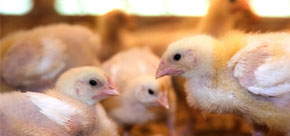Chicken Standards
ANIMAL HEALTH AND WELFARE Version 5.1 (modified)
Click to view
Key – Those standards which have greater significance (all other standards are normal)
Recommendation – Those which do not affect certification
New – A completely new standard which the member must now adhere to
Revised – A standard that has changed and requires the member to take some different or additional action to before
Upgraded – The standard has been upgraded to a Key standard or from a Recommendation to a full standard
Appendix – Referenced in ‘How you will be measured’. Indicates that additional information is provided in the Appendices, which are available at the end of each section.
CH.AH.1 Key
A Flock Health Plan to proactively manage and improve health and welfare of birds must be established and implemented
How you will be measured
CH.AH.1.a
CH.AH.1.b
CH.AH.1.d
CH.AH.1.e
CH.AH.1.f
CH.AH.1.g
Flock Health Plan
CH.AH.2
Records of the health and performance of all birds must be maintained
How you will be measured
CH.AH.2.a
CH.AH.2.b
CH.AH.2.d
CH.AH.2.e
Health and performance records
CH.AH.4
The health and welfare of birds must be met at all times
How you will be measured
CH.AH.4.a
CH.AH.4.4
Where eggs are hatched on-farm, eggs are monitored regularly during hatching
CH.AH.5
The health and welfare of birds must be checked regularly
How you will be measured
CH.AH.5.a
Flock inspection records
CH.AH.6 Key
Birds must be handled in a way that avoids injury and minimises stress
CH.AH.7.1
There must be a named Welfare Officer who is responsible for co-ordinating welfare on-farm/in the hatchery
How you will be measured
CH.AH.7.1.a
CH.AH.7.1.b
CH.AH.7.2 Key
All poultry farms/hatcheries must retain the services of a named veterinary surgeon or practice
CH.AH.8 Key
Sick or injured birds/chicks must receive prompt attention in order that suffering is not prolonged
How you will be measured
CH.AH.8.a
CH.AH.9 Key
Birds that do not respond to treatment or require emergency euthanasia must be promptly and humanely euthanased by a trained and competent person
How you will be measured
CH.AH.9.d
CH.AH.9.e
CH.AH.9.f
CH.AH.9.g
CH.AH.9.h
CH.AH.9.2
All equipment used for euthanasia of birds, chicks and embryos must be inspected daily by trained and competent staff to ensure it is working effectively
CH.AH.10.2
Hatcheries must be monitored for Salmonella
How you will be measured
CH.AH.10.2.a
Salmonella testing records kept for two years
- Guidance on animal health and disease can be found at www.nadis.org.uk
- Defra have produced a guide to the Poultry Breeding Flocks and Hatcheries Order 2007 and National Control Programme for Salmonella in breeding flocks
- The Humane Slaughter Association provide information on euthanasia on their website www.hsa.org.uk
